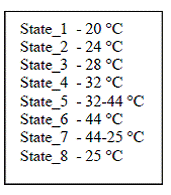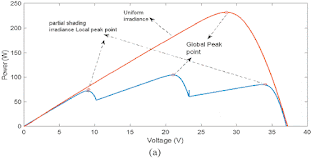ABSTRACT:
This
paper describes the opportunity of implementing a model of a Mho type distance
relay with a three zones by using MATLAB/SIMULINK package. SimPowerSystem
toolbox was used for detailed modeling of distance relay, transmission line and
fault simulation. The proposed model was verified under different tests, such
as fault detection which includes single line to ground (SLG) fault, double
line fault (LL), double line to ground fault (LLG) and three phase fault, all
types of faults were applied at different locations to test this model. Also
the Mho R- jX plain was created inside this model to show the trajectory of
measured apparent impedance by the relay. The results show that the relay
operates correctly under different locations for each fault type. The
difficulties in understanding distance relay can be cleared by using
MATLAB/SIMULINK software.
KEYWORDS:
1. Power
system protection
2. Distance
relay
3. Line
protection
4. MATLAB/SIMULINK
5. Apparent
Impedance
SOFTWARE: MATLAB/SIMULINK
BLOCK DIAGRAM:
Figure 1. Overall simulation model
CONCLUSION:
A Mho type distance relay was successfully developed based on MATLAB/SIMULINK package, (each part of the relay is implemented as a separate function). Each function has been created using special blocks of SIMULINK. By testing the behavior of the developed relay model under different fault conditions, the relay model was able to recognize the appropriate fault type. From perspective impedance calculations, the relay model has the ability of indicating the correct zone of operation in all cases. The relay identifiers the fault locations as expected, as the fault location is changed, the measured impedance change consequently. The impedance path which reflects the behavior of the model under different fault conditions was presented and discussed
REFERENCES:
[1] Anderson. P.M.”Power System Protection”, ISBN 0-07-134323-7 McGraw-Hill,1999.
[2] Muhd Hafizi Idris, Mohd Saufi Ahmad, Ahmad Zaidi Abdullah, Surya Hardi “Adaptive Mho Type Distance Relaying Scheme with Fault Resistance Compensation” 2013 IEEE 7th International Power Engineering and Optimization Conference (PEOCO2013), Langkawi, June 2013.
[3] M. H. Idris, S. Hardi and M. Z. Hassan, “Teaching Distance Relay Using Matlab/Simulink Graphical User Interface”, Malaysian Technical Universities Conference on Engineering and Technology,
November 2012.
[4] L. C. Wu, C. W. Liu and C. S. Chen, “Modeling and testing of a digital distance relay using Matlab/Simulink”, IEEE 2005.
[5] The Math Works, Inc., “SimPowerSystems user‟s guide”, Version 4.6, 2008.





































